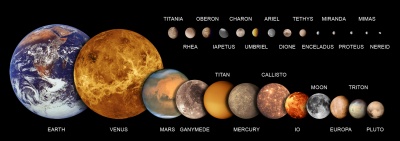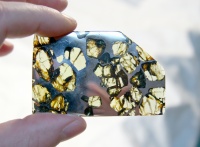Difference between revisions of "Colonization of the solar system"
(added image of list of rocky bodies) |
(→Asteroids in the main belt between Mars and Jupiter: added image of asteroid belt) |
||
| Line 11: | Line 11: | ||
* [[Venus]] | * [[Venus]] | ||
| − | == Asteroids in the main belt between | + | == Asteroids in the main belt between Mars and Jupiter == |
| + | |||
| + | [[File:InnerSolarSystem-en.png|200px|thumb|left|The main asteroid belt lies between Mars and Jupiter. Jupiter with its gravitational disturbances played a role in creating it.]] | ||
[[File:Pallasite_slice-of-Esquel-meteorite.jpg|200px|thumb|right|There is lots of planetary core material flying around in the main asteroid belt. Shown here is what is believed to be material of a kind that that can be found at the core mantle boundary of larger rocky planets.]] | [[File:Pallasite_slice-of-Esquel-meteorite.jpg|200px|thumb|right|There is lots of planetary core material flying around in the main asteroid belt. Shown here is what is believed to be material of a kind that that can be found at the core mantle boundary of larger rocky planets.]] | ||
| Line 18: | Line 20: | ||
* pro: just the right temperature for the presence of a variety of materials | * pro: just the right temperature for the presence of a variety of materials | ||
* pro: no gravity traps | * pro: no gravity traps | ||
| + | * con: there is quite a bit less solar energy than on earth - but it is still enough to be useful | ||
* con: all the material is in the solid state requiring complex mining | * con: all the material is in the solid state requiring complex mining | ||
* con: laggy telecommunication in a dispersed net due to light-speed runtimes | * con: laggy telecommunication in a dispersed net due to light-speed runtimes | ||
Revision as of 10:47, 7 February 2016
Contents
Bodies with Atmospheres
Atmospheres can deliver building materials in the easiest usable (do not use "digestable"!) standardized form.
- Air using micro ships and macro ones.
- Gas giant atmospheres
- Venus
Asteroids in the main belt between Mars and Jupiter
- pro: enormous accessible surfacer area - probably way greater than all the planets and moons together
- pro: just the right temperature for the presence of a variety of materials
- pro: no gravity traps
- con: there is quite a bit less solar energy than on earth - but it is still enough to be useful
- con: all the material is in the solid state requiring complex mining
- con: laggy telecommunication in a dispersed net due to light-speed runtimes
Moons and dwarf planets in the outer solar system
Furter out in the solar system small bodies become increasingly icy. Water ice and at some point even nitrogen ice becomes rock forming material. If not enough carbon and silicon is present one might want to mechanosynthesize weaker bonding ices there and use those materials for not too demanding structural purposes
Flavors of diamondoid gem gum technology
Vastly differing chemical and thermal conditions at different places in the solar system could lead to differentiation (speciation?) of diamondoid technology into very different branches.
Structures built out of water ice via cryonic inter-molecular mechanosynthesis wont find much use beside ephemeral consumables on earth since they quickly melt when uncooled or diffuse when insufficiently cooled. Further out and farther from the sun though ice and other compounds that are volatiles on earth can be seriously used as a permanent building materials. This materials are also the most abundant materials in those regions so they are likely to be used.
Unlike methane water can't be safely polymerized to stuff that does not melt above 0°C. Long peroxide chains are a powerful explosives. Also oxygen polymers are un-branched linear chains and thus can't form tight meshed poly-cyclically looped covalent stiff diamondoid materials. So technology that uses only the elements oxygen and hydrogen for structural components (that is water) stays out there. Reasonably safely making explosive crystals from mostly water that do not melt will certainly be possible via mechanosynthesis since they can be made practically perfectly clean - the usefulness may be questionable.
- Chemically reducing environments (nonoxidic compounds)
- high temperature environments (refractory materials)
- metal rich environments (planetary core material in the asteroid belt)


